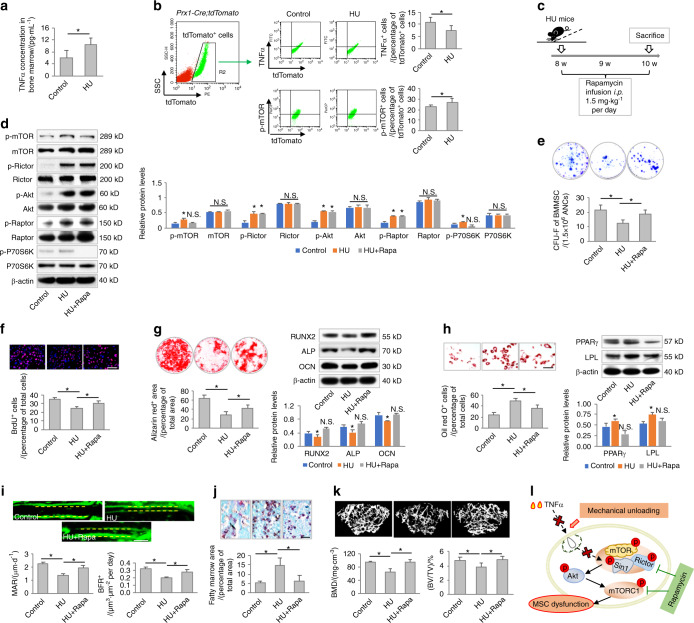Fig. 6.
Mechanical unloading induces MSC functional decline and bone loss that are counteracted by rapamycin. a ELISA analysis of TNFα levels in the bone marrow of control and hindlimb unloading (HU) mice (N = 5). b Flow cytometric analyses of TNFα+ cells and p-mTOR+ cells in bone marrow mesenchymal cells. Prx1-cre:tdTomato mice (N = 5) were used to label bone marrow mesenchymal cells in vivo. c Schematic diagram showing the experimental design used to investigate the effect of rapamycin treatment on HU mice in vivo. d Western blot analyses of mTOR signaling (N = 3). e–h Functional analyses of MSCs according to CFU, BrdU labeling, and osteogenic and adipogenic differentiation. N = 5. Scale bars = 100 μm. i Calcein labeling for bone formation analysis. N = 5. Scale bar = 50 μm. j Oli red O staining for bone marrow adiposity. N = 5. Scale bar = 150 μm. k Micro-CT analysis of trabecular bone mass (N = 5). l Diagram showing mechanical unloading-induced MSC functional decline and bone loss counteracted by rapamycin. For quantification of Western blotting, a two-tailed Student’s t test was used for the comparison between the treatment and control groups. *P < 0.05. Data represent the mean ± SD

